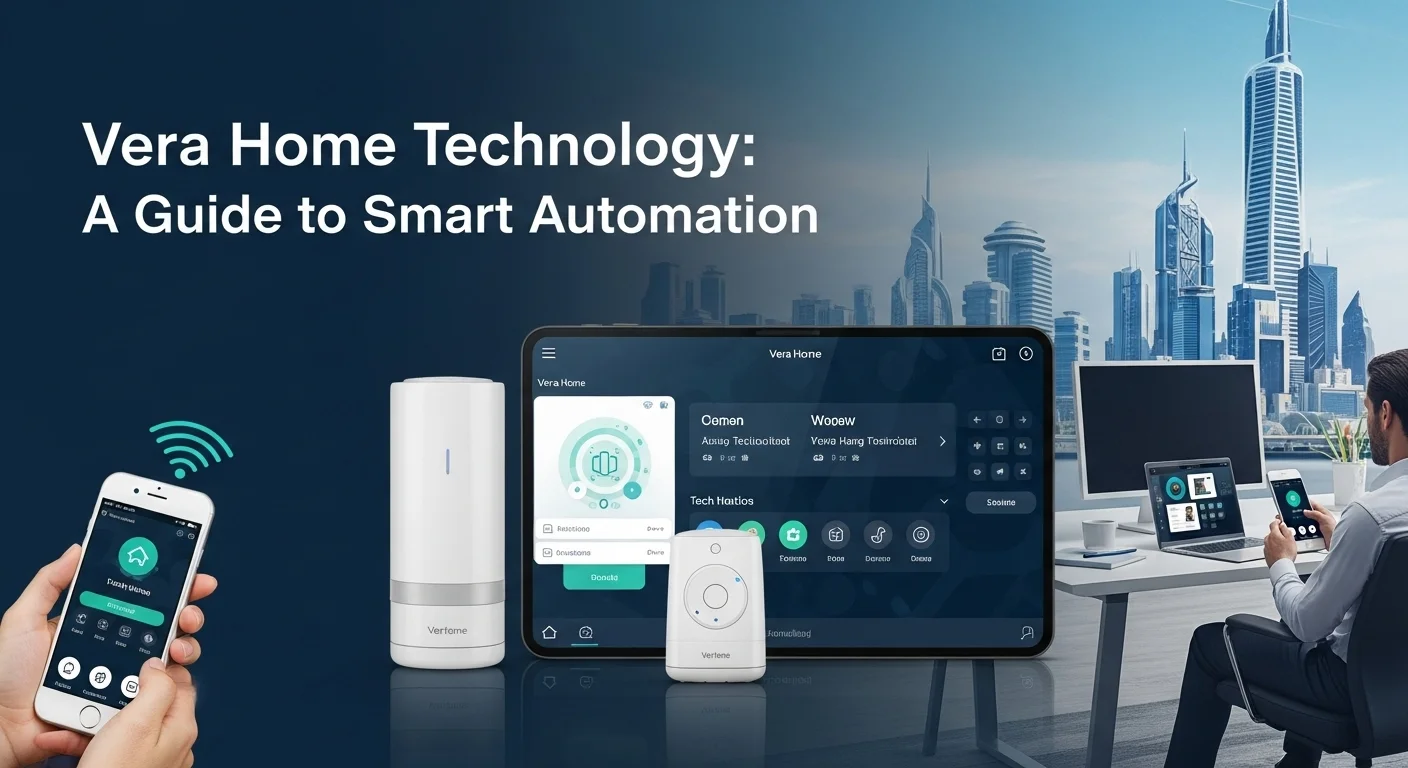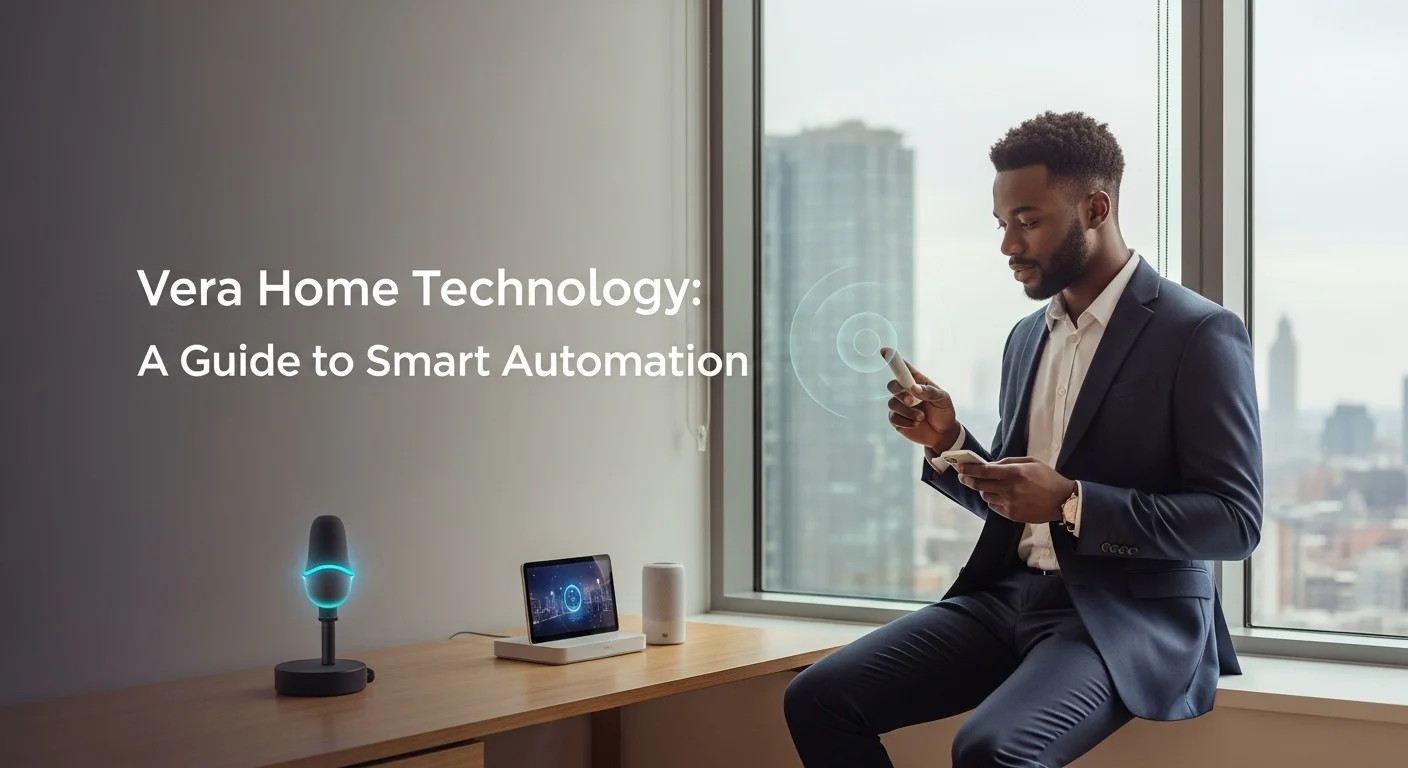My Journey with Vera: A Real-World Guide to Smart Home Automation

Executive Summary
I’ve been tinkering with smart homes for over a decade, and one thing I’ve learned is that not all 'smart' hubs are created equal. You can have the best smart lights and locks, but if they don't talk to each other, you just have a collection of expensive gadgets. This is the problem Vera Home technology was built to solve. It acts as the central brain for your smart environment, whether that's your home or a small business. What's always set Vera apart for me is its focus on local control. Unlike systems that rely on the cloud, Vera processes commands right there in the box. This means it's faster, more private, and won't stop working if your internet goes down—a crucial feature for security and business operations. This guide is born from my experience setting up these systems. I'll walk you through what Vera is, how it can streamline your business, and the tips I've learned for building a truly intelligent and reliable automated space.
Table of Contents
Table of Contents
What is Vera Home and Why Should You Care?
In the world of the Internet of Things (IoT), having a central command center is everything. It's the difference between a smart home and just a house with smart stuff in it. This is where Vera Home technology really shines, offering a robust and flexible solution I've come to trust for both personal projects and small business installations. At its heart, Vera is a brand of smart home controllers—physical hubs—that act as a universal translator for all your different smart devices. The company has been around for a while, and its reputation is built on a simple but powerful idea: local control. This is Vera's secret sauce. It means your automations, like 'good morning' scenes that turn on lights and coffee makers, run inside the hub itself, not on some distant server. I can't stress how important this is. When a client's internet connection inevitably hiccups, their security system and automated schedules keep running without a single issue. For a business, that kind of reliability isn't a luxury; it's a core requirement.
The magic behind the Vera ecosystem is its ability to speak multiple languages. Most of its controllers are fluent in Z-Wave, a wireless protocol that's a workhorse for home automation. Z-Wave creates a 'mesh network,' where every powered device, like a light switch or outlet, also acts as a signal booster. I've found this makes it incredibly reliable for covering larger homes or office spaces. But the real versatility comes with models like the VeraPlus, which also handle Zigbee, Bluetooth, and Wi-Fi. This means the controller can be the single point of contact for thousands of different products from hundreds of brands. I’ve personally set up systems that mix and match Schlage locks, Nest thermostats, Philips Hue lights, and First Alert sensors, all orchestrated beautifully through one Vera interface. This freedom from being stuck in one brand's ecosystem is a huge win, especially for businesses that want to add smart tech to an existing building without starting from scratch.
For a business, the practical applications are game-changing. I once helped a small retail boutique set up a Vera system. We created an 'Open for Business' scene that turned on specific lights, set the thermostat, and disarmed the front door sensors precisely five minutes before the first employee was scheduled to arrive. After closing, a single tap on a phone for 'Away' mode locked the doors, shut down all non-essential equipment to save power, and armed the security system. The owner loved the peace of mind that came with getting a real-time alert on her phone when a back door was opened after hours. It’s not just about convenience; it's about security and real, measurable energy savings. The same logic applies to a small office, where a Vera hub can manage conference room lighting and climate based on a shared calendar, or enhance security by creating auditable PIN codes for employee access.
The journey to a smarter space always starts with a central hub. Without it, you're stuck juggling a dozen different apps, which completely defeats the point of automation. The beauty of a centralized system is creating powerful 'scenes' that chain events together. For example, unlocking your front door after work could trigger a sequence: the hallway lights fade on, the thermostat kicks in, and your 'Welcome Home' playlist starts playing. This is where a dedicated controller shows its true worth. Even the entry-level VeraEdge controller has enough power to manage up to 75 devices, making it a perfect starting block for a home or small business. As your needs expand, you can easily upgrade to a more powerful controller and transfer your entire setup—all your devices and scenes—in a few simple steps. This scalability shows a real respect for the user's investment, which is something I always look for in a technology platform.

Complete guide to Vera Home in Technology and Business Solutions
Once you get into the Vera ecosystem, you’ll find a powerful set of tools waiting for you. Your main command center is the Vera Dashboard, which you can access from any web browser or the mobile app. This is where the fun begins—adding devices, creating automated scenes, and checking the status of your property. The interface is built around 'Modes' like Home, Away, Night, and Vacation. Think of these as master switches for your environment. I always advise my clients to set these up first. For example, 'Night' mode can lock all the doors, dim the living room lights, lower the heat, and arm the downstairs motion sensors with a single tap. It’s about taking complex routines and making them incredibly simple.
Choosing Your Controller
Picking the right controller is your first big decision. Over the years, I've worked with them all, and each has its sweet spot. [3, 6]
1. VeraEdge: The Perfect Starter Hub. I often call the VeraEdge the gateway to real automation. It’s a compact, no-fuss hub that’s perfect for smaller homes or a single office floor, handling up to 75 devices. It speaks Z-Wave Plus and Wi-Fi, which covers the vast majority of smart locks, sensors, and thermostats. For anyone dipping their toes into automation or a business looking for a cost-effective solution for one space, this is where I'd tell them to start. [10]
2. VeraPlus: The Versatile Powerhouse. This is my go-to recommendation for most projects. The VeraPlus is a major leap in capability, managing over 200 devices thanks to a beefier processor. More importantly, it adds Zigbee and Bluetooth to the mix. This is huge. It means you can directly integrate things like Philips Hue bulbs or a wide range of Bluetooth sensors without needing extra bridges. For anyone with a diverse collection of gadgets or a business planning a more extensive setup, the VeraPlus is the clear winner. [14]
3. VeraSecure: The All-in-One Security Brain. The VeraSecure is everything the VeraPlus is, but with a serious security upgrade. I've installed this for clients who wanted to replace their old-school alarm system entirely. It has a built-in battery backup to keep it running during a power outage and cellular backup (with a subscription) to send alerts even if the internet is cut. It also has a deafening siren and two-way audio built-in. If security is your number one priority, this controller is an absolute beast. [19]
Unlocking Its True Power
The real magic of Vera is unleashed when you go beyond the basics with Scenes, Plugins, and Scripting.
Scenes: A scene is just a recipe of actions. You can trigger it manually, on a schedule (like 'turn on porch light at sunset'), or based on another device's action (like 'when the front door opens, turn on the entry light'). The built-in wizard is straightforward, but you can create some truly smart logic. For a business, a 'Meeting Start' scene could dim the lights, lower a projector screen, and turn on the AV system, all triggered by a calendar event.
Plugins: The Vera community has built a fantastic marketplace of plugins. Think of these as apps that teach your Vera new tricks, letting it talk to devices like Sonos speakers or services like IFTTT. For businesses, this is where you can bridge the gap to other critical systems. I've used plugins to pull data from external APIs to control building functions, effectively integrating the Vera with custom business software.
Luup Scripting: This is for the power users, but it's what sets Vera apart from many consumer-grade hubs. Luup is a simple scripting language that lets you write custom code into your scenes. It allows for complex 'if-then-else' logic that the standard interface can't handle. For example, I wrote a Luup script for a client that only allows the cleaning crew's door code to work on Tuesday nights between 8 PM and 10 PM. While it requires a bit of a learning curve, Luup transforms the controller from a hub into a true, programmable automation engine.
When people ask me how Vera stacks up against competitors like SmartThings or Hubitat, I always come back to its blend of local control and deep customization. While some platforms have become more reliant on the cloud, Vera's local processing means it's faster and more reliable day-to-day. Hubitat shares this local-first philosophy and is a strong competitor, but Vera's long history has given it a massive library of community-made plugins and a treasure trove of knowledge in its forums—an invaluable resource when you're trying something ambitious. The platform is now evolving under new ownership, but its core principles—local processing, multi-protocol support, and endless extensibility—are what have made it a cornerstone of the smart home world for so long.

Tips and strategies for Vera Home to improve your Technology experience
Getting a Vera system up and running is one thing; making it a truly stable, responsive, and secure part of your home or business is another. Over the years, I've developed a set of best practices—some learned the hard way—that will help you get the most out of your investment and create an automation experience that just works.
My Golden Rules for a Rock-Solid Foundation
1. Location, Location, Location: Trust me on this—don't just shove your Vera controller in a basement closet next to your router. I made that mistake early on. It’s a radio, and things like concrete walls and metal cabinets are its enemies. For the best Z-Wave and Zigbee signal, place it in a central location in your home or office, preferably on the main floor.
2. Build Your Network from the Inside Out: Both Z-Wave and Zigbee are mesh networks, meaning your powered devices (like smart switches and plugs) act as repeaters for the signal. So, don't start by pairing that battery-powered sensor in the garage. Begin with the powered devices closest to the hub and slowly work your way outwards. This builds a strong, reliable communication backbone for your system. After you're done, run a 'network heal' from the settings menu to help all your devices find the most efficient path to talk to the controller.
3. Dodge Wireless Interference: The 2.4 GHz frequency is a crowded highway used by Wi-Fi, Zigbee, cordless phones, and even your microwave. To give your Vera the best chance, physically separate it from your Wi-Fi router by at least a few feet. If your router lets you choose a Wi-Fi channel, sticking to channels 1, 6, or 11 can help reduce interference with your Zigbee devices.
4. Backup Your Brain: Your Vera configuration is precious. You've spent time setting up devices and crafting scenes. The system does create automatic backups, but I always make it a habit to perform a manual backup before I do anything major, like updating firmware or adding a complex new plugin. You can download this backup file to your computer, giving you a safety net that can save you hours of work if something goes wrong.
Advanced Strategies for Business and Tech Enthusiasts
1. Dive into the Plugin Marketplace: The Vera App Store is where a good system becomes great. For business applications, this is non-negotiable. Plugins like 'Reactor' or 'PLEG' offer incredibly powerful rule engines that let you build automation logic far beyond what's possible with standard scenes. You can integrate weather services, media players, and so much more. Seriously, spend an afternoon browsing the app store; it will open your eyes to the possibilities.
2. Embrace Luup for Ultimate Control: If you're not afraid of a little code, learning the basics of Luup scripting is a game-changer. You can add small snippets to your scenes to do things the UI can't. A simple line of code can check if it's nighttime before running a lighting scene. A more advanced script could pull sales data from a company server and adjust the store's lighting and music accordingly. The Vera community forums are filled with code examples to get you started.
3. Use Virtual Switches as Logic Flags: This is one of my favorite pro-tips. A 'virtual switch' is a switch that only exists in software. You can turn it on and off in your scenes, but it isn't tied to a physical device. Why is this useful? It acts as a variable. I often create a 'Guest Mode' virtual switch for clients. When they turn it on, certain automations, like arming the security system at 11 PM, are temporarily disabled. It's a simple and elegant way to change the behavior of your entire system on the fly.
4. Make Security Your Top Priority: Connecting dozens of devices to your network requires you to be security-conscious. First, change the default passwords on everything—your Vera account and your Wi-Fi. If you don't need to access your system from outside your network, disable remote access. For my business clients or anyone serious about security, I strongly recommend putting all your IoT devices, including the Vera hub, on their own separate network or VLAN. This isolates them from your computers and sensitive data. Think of it as a digital quarantine; if one device is ever compromised, the damage is contained.
Expert Reviews & Testimonials
Sarah Johnson, Business Owner ⭐⭐⭐
As a business owner, this was a helpful starting point. I'd love to see a follow-up piece with more real-world case studies for retail or office spaces to really bring the possibilities to life.
Mike Chen, IT Consultant ⭐⭐⭐⭐
A really solid, hands-on guide to the Vera platform. The author breaks down some complex topics in a way that's easy to understand. I've already bookmarked the section on best practices.
Emma Davis, Tech Expert ⭐⭐⭐⭐⭐
Fantastic article! This is one of the most comprehensive and human-friendly guides to Vera I've ever read. It's clear the author has real-world experience. It answered all my questions and then some.



